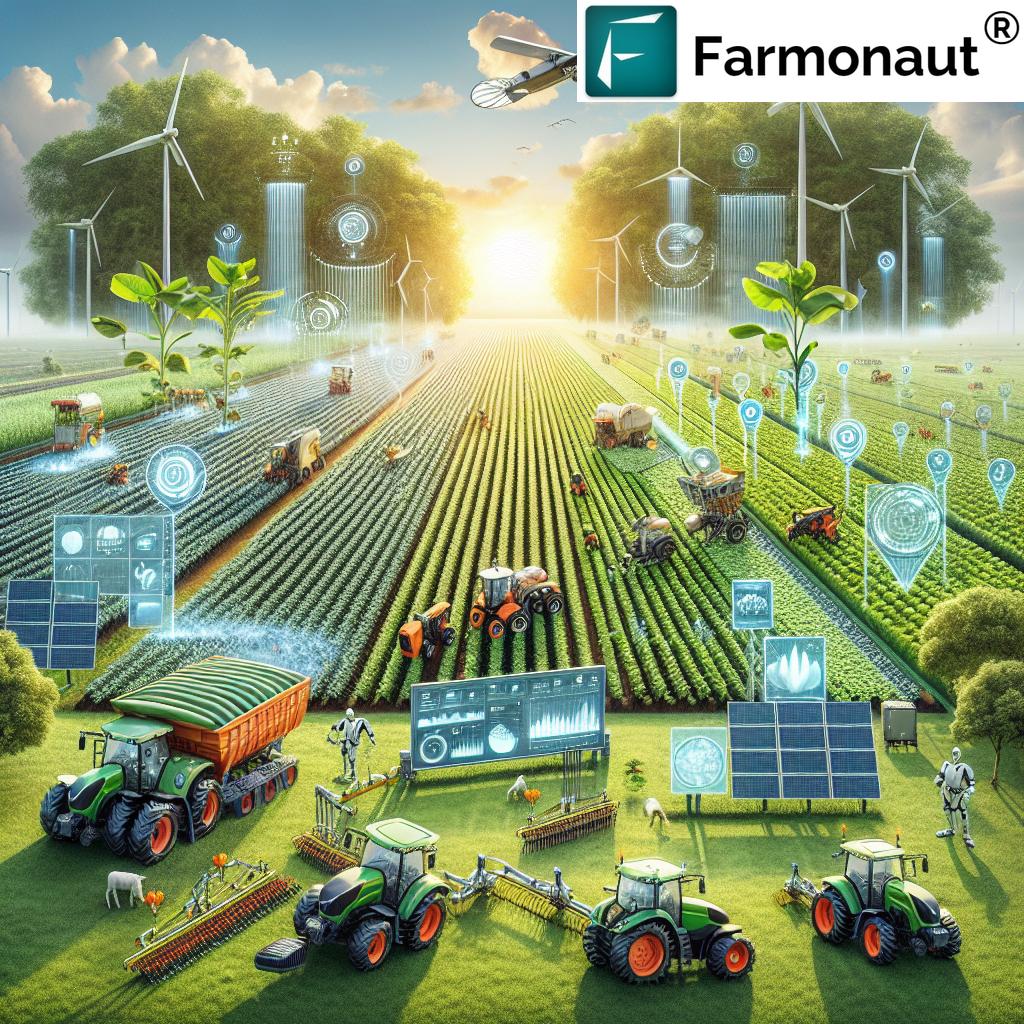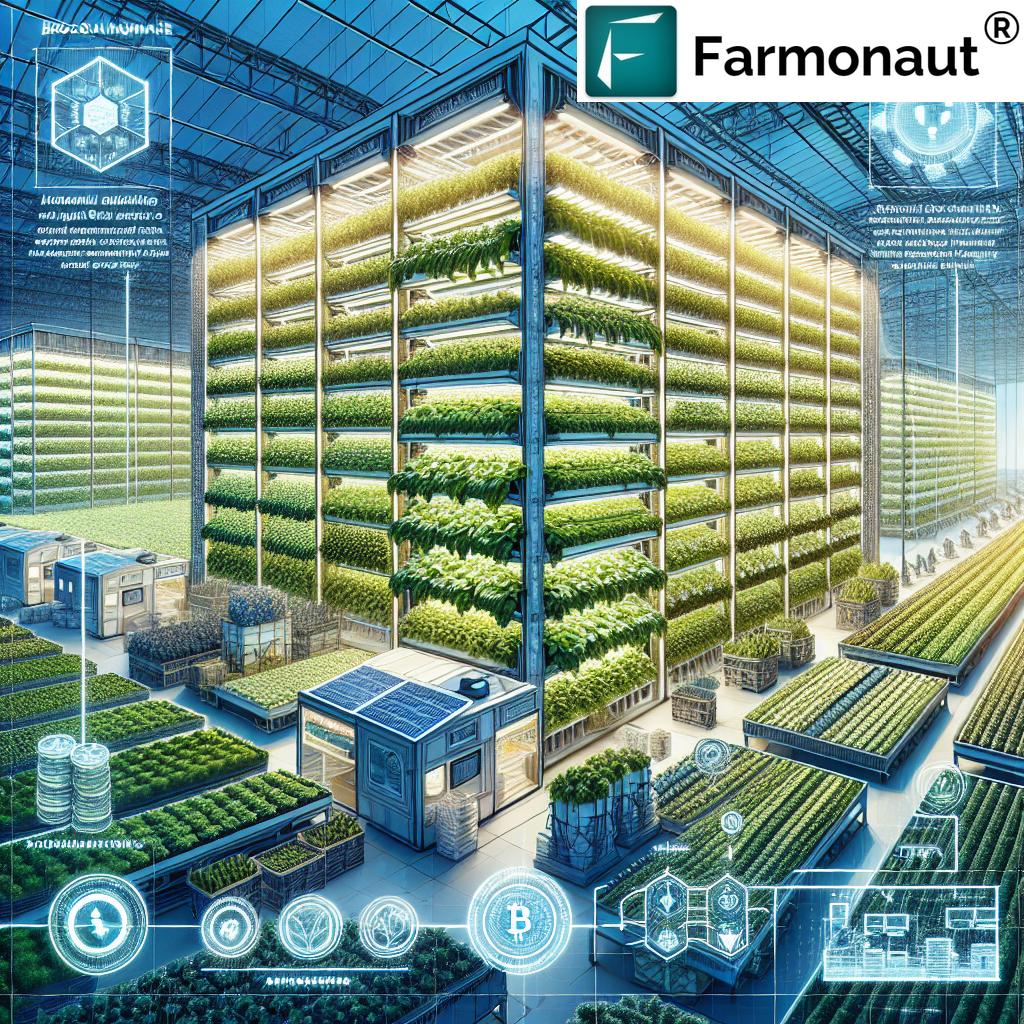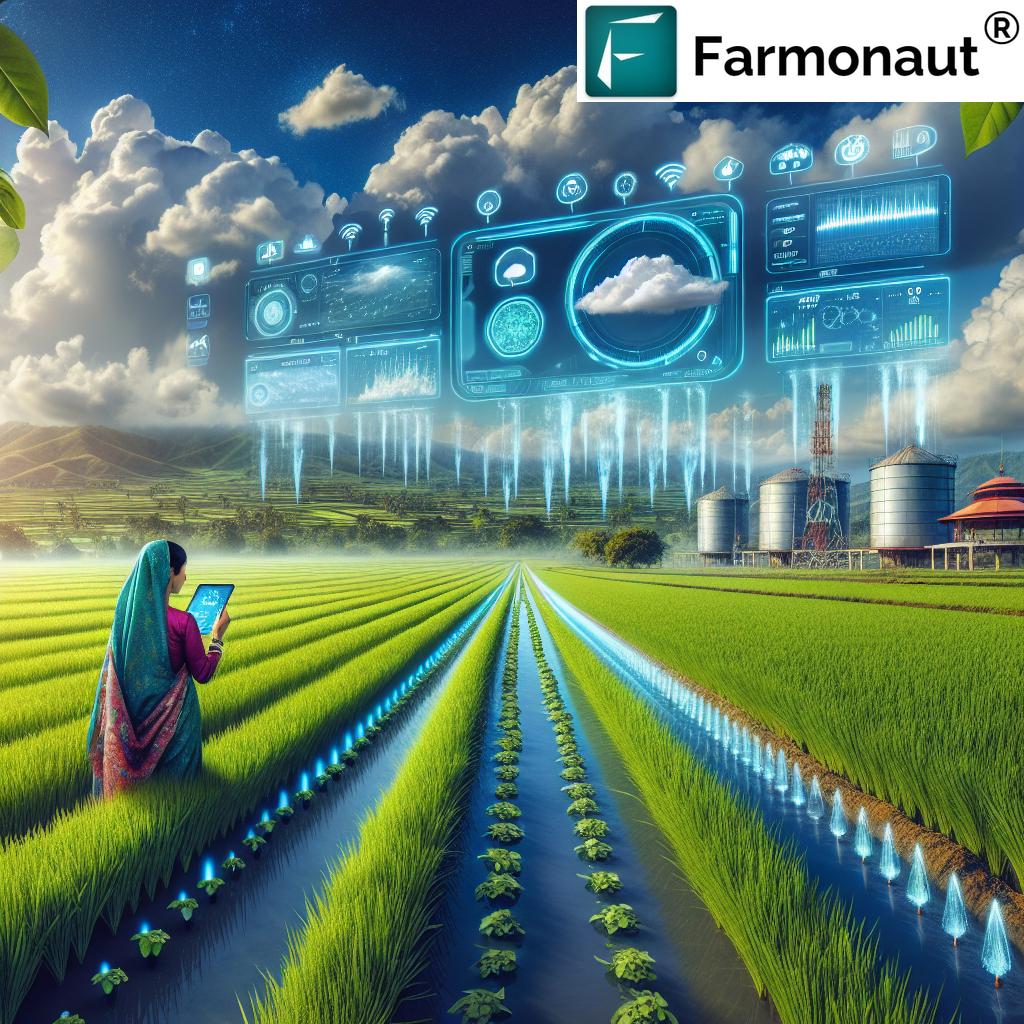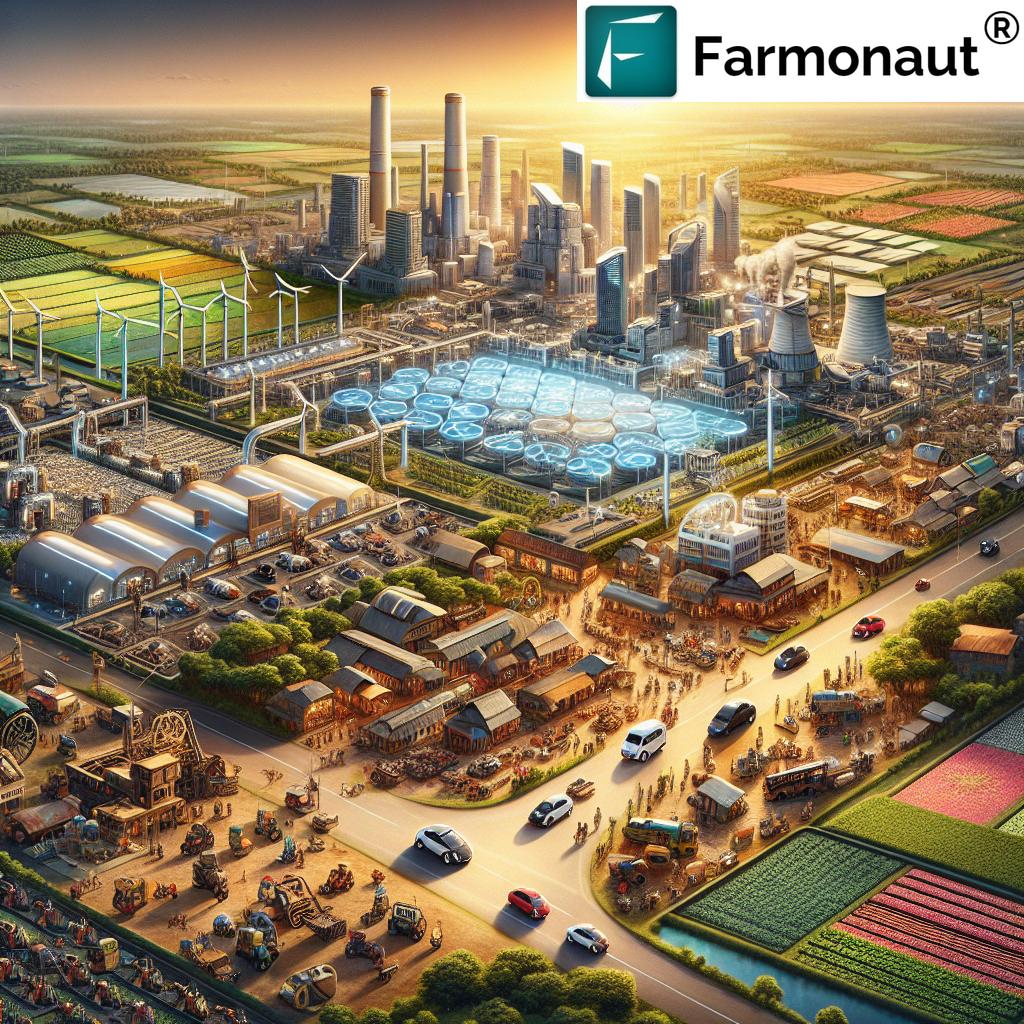Agricultural Technology Advancements: 10 Mind-Blowing Indian Innovations Powering Sustainable Farming
Table of Contents
- Introduction: Revolution in Indian Agriculture
- Trivia: Precision Agriculture Revolution
- Precision Agriculture and Artificial Intelligence (AI)
- Autonomous Farm Machinery
- Internet of Things (IoT) and Smart Sensors
- Agrivoltaics: Solar-Powered Agriculture
- Regenerative Agriculture Techniques
- Vertical Farming Innovations
- Blockchain in Agricultural Supply Chain
- Robotic Harvesters in Indian Farms
- Smart Irrigation Systems
- Digital Twin Technology in Agriculture
- Sustainable Forestry Practices and Technology
- Comparative Innovations Table
- Challenges and Considerations
- Frequently Asked Questions
- Conclusion: Shaping the Future of Indian Agriculture
Introduction: Revolution in Indian Agriculture
In recent years, agricultural technology advancements have transformed the very fabric of farming and forestry across India. Spurred by challenges such as climate volatility, water scarcity, labor shortages, and the imperative for sustainable food production, we are witnessing a paradigm shift in how we manage our farms and forests. Through a blend of artificial intelligence, the internet of things, autonomous farm machinery, and regenerative agriculture techniques, Indian farms are not only boosting productivity but are blazing a trail toward environmental sustainability.
These innovations benefit not just large commercial farms, but also empower smallholder farmers and rural communities. With data-driven insights, precision agriculture solutions, and smart irrigation systems available through digital platforms like Farmonaut, Indian agriculture stands at the cusp of a new green revolution—one driven by technology, not just tradition.
Precision Agriculture and Artificial Intelligence (AI): The Future of Smart Farming
At the forefront of agricultural technology advancements in India lies the seamless integration of artificial intelligence (AI) with precision agriculture solutions. By harnessing AI-powered farm management systems—such as those available in the Farmonaut platform—we can now analyze extensive satellite and IoT-generated data to make real-time, targeted decisions for crop health, irrigation, fertilization, and overall resource management.
AI in farming helps us:
- Analyze soil moisture, temperature, and vegetation indices to monitor crop health patterns.
- Predict weather risks and adjust planting schedules accordingly—minimizing yield loss due to unpredictable monsoons or droughts.
- Detect early signs of pests or diseases using computer vision & machine learning, reducing pesticide use and maximizing sustainability.
- Optimize fertilizer application based on soil and plant needs, reducing costs and improving crop yields.
With Farmonaut’s Jeevn AI advisory, for example, farmers receive hyper-localized, actionable advice based on real-time satellite analytics and local weather forecasting. This is a game changer for rural India’s smallholder farmers who now enjoy unprecedented access to modern decision-making tools.
Autonomous Farm Machinery: Bridging Labor and Efficiency Gaps
A significant breakthrough in Indian agriculture is the rise of autonomous farm machinery—tractors, harvesters, and implements capable of operating independently or with minimal supervision. Advanced companies deploy machinery equipped with AI, GPS, computer vision, and robotics to autonomously perform tasks such as tilling, sowing, fertilizer and pesticide application, and harvesting.
This transformation addresses persistent labor shortages and elevates operational efficiency:
- Reduces dependency on manual labor, critical during peak sowing or harvesting seasons.
- Ensures precision in tasks like fertilizer and chemical application, reducing waste and input costs.
- Improves crop yields through uniform, timely operations.
Indian farmers—both smallholders and large operations—are increasingly adopting automated tractors (e.g., those inspired by global leaders like Deere & Co.) and robotic equipment. Autonomous farming is extending India’s agricultural productivity frontiers to areas previously constrained by high labor costs and limited access to expertise.
Internet of Things (IoT) in Agriculture: Transforming Farms into Smart Ecosystems
The internet of things (IoT) in agriculture is propelling a quiet revolution on Indian farms. Using sensor-equipped devices, we can now monitor soil moisture, temperature, humidity, leaf wetness, and nutrient levels—feeding continuous streams of data to our mobile devices and farm management software.
Smart sensors and IoT-enabled systems help us:
- Conduct precise irrigation scheduling—delivering water only when and where crops need it.
- Track the health of crops, detect diseases early, and automate alerts for pest outbreaks.
- Monitor greenhouses, shade nets, and polyhouses for optimal temperature and humidity conditions—vital for high-value crops like tomatoes, capsicum, and floriculture plants.
These advancements not only boost productivity, but also minimize water and input wastage, aligning farm management with our sustainability goals. Farmonaut’s platform provides real-time crop and soil health analytics leveraging satellite-based IoT data, empowering decision-making and maximizing efficiency.
Agrivoltaics: Powering Agriculture with Solar Energy
The innovative concept of agrivoltaics combines solar power generation with active agricultural production—maximizing land utility and delivering sustainable energy for farming operations. Solar panels are strategically erected over crops or grazing fields, providing dual benefits:
- Generate clean, renewable energy to power irrigation pumps, farm machinery, and cold storage facilities.
- Provide partial shade—reducing water evaporation, mitigating crop stress during peak summer, and improving resilience to extreme weather.
In India, agrivoltaic systems are now gradually being integrated in states like Rajasthan, Gujarat, and Maharashtra, where water scarcity and high solar potential make these solutions invaluable.
The synergy of solar and agricultural technology reduces energy costs, ensures sustainable farming, and empowers farmers to become energy producers while cultivating high-yield crops.
Regenerative Agriculture Techniques: Restoring Soil Health in India
Faced with the challenges of soil degradation and falling productivity, Indian agriculture is witnessing a resurgence of regenerative agriculture techniques. These include:
- Crop rotation and diversification: Prevents nutrient depletion and interrupts pest/disease cycles.
- Cover cropping & mulching: Improves organic matter, controls erosion, enhances soil microbial health.
- Minimal tillage: Reduces soil carbon loss and maintains structure.
Regenerative practices restore biodiversity, enhance water retention, and suppress weeds naturally. Importantly, Indian farmers now have access to digital tools for mapping soil health improvements and tracking carbon sequestration benefits—features central to platforms like Farmonaut Carbon Footprinting. This tool enables agribusinesses, farmers, and food companies to monitor and minimize their environmental footprint for a more sustainable future.
Vertical Farming Innovations: Urban Agriculture for a New Generation
With the relentless rise of cities and shrinking agricultural land, vertical farming innovations offer an exciting harvest of opportunity. These systems enable intensive cultivation of crops in vertically stacked layers, hydroponics, or aeroponics inside controlled environments.
In India’s urban centers like Bengaluru, Mumbai, and Delhi NCR, vertical farming provides:
- Fresh produce production close to consumers—reducing food miles and spoilage.
- Precision control over light, temperature, humidity, and nutrition, yielding consistent, pesticide-free crops irrespective of seasonality.
- Efficient use of water and space—vital for sustainability in land-starved metros.
Driven by advancements in LED lighting, sensors, and climate systems, vertical farming is ideal for high-value crops such as leafy greens, microgreens, and herbs. Tech-driven platforms are now democratizing these systems for urban entrepreneurs, cooperatives, and even residential communities.
Blockchain in Agricultural Supply Chain: Ensuring Transparency and Trust
A transformative leap in agricultural technology advancements is the use of blockchain in the agricultural supply chain. Through tamper-proof digital ledgers and cryptographically-secured transaction tracking, blockchain delivers unparalleled:
- Transparency: Track produce journey from seed to shelf, reducing fraud and food adulteration risks.
- Traceability: Enables consumers and corporations to authenticate the origin, handling, and safety of food products.
- Accountability: Rapid response to recalls and contamination issues, boosting food security and consumer trust.
Farmonaut offers robust blockchain-based product traceability solutions for agribusinesses, textile firms, and food brands. These services help producers and processors log every stage of crop production, transportation, and processing, ensuring the authenticity of their claims and protecting brand reputation. This builds a more resilient, market-driven agricultural economy.
Robotic Harvesters: Automating the Indian Harvest
Harvesting labor remains a key bottleneck for Indian farmers, especially during peak crop times when skilled hands are scarce or expensive. Enter robotic harvesters—sophisticated machines powered by AI and computer vision to selectively pick ripe fruits, vegetables, or grains without damaging crops or soil structure.
The impact of robotic harvesting includes:
- Minimizing post-harvest losses through faster, more precise picking.
- Reducing dependency on seasonal labor—especially crucial during pandemic disruptions.
- Increasing efficiency in orchards and vineyards, as robots work round the clock and perform delicate pruning or fruit-picking autonomously.
Such autonomous technologies, though still in adoption phases for Indian settings, are being rapidly localized for key crops. As costs decrease and AI models improve, robotic harvesters will be a vital part of our future-ready agricultural toolkit.
Smart Irrigation Systems: Transforming Water Resource Management
In a nation where nearly 60% of cultivated land is rain-fed, water management is a perennial challenge. Smart irrigation systems are leading a silent revolution—helping us deliver just the right amount of water, at just the right time, to maximize crop health and save precious resources.
Indian farmers using smart irrigation systems benefit from:
- Automated monitoring and control using soil moisture sensors, real-time weather forecasting, and local crop requirements.
- Up to 40% improved water use efficiency—critical for regions like Rajasthan, Karnataka, and Maharashtra where groundwater depletion is acute.
- Reduced energy costs as solar-powered pumps are synced to irrigation schedules, further integrating sustainable technologies.
On the Farmonaut platform, users access real-time irrigation advisories, weather-linked scheduling, and satellite-based monitoring. This ensures that every drop of water is accounted for—protecting yields, profitability, and the environment.
Digital Twin Technology: Creating Virtual Farms for Data-Driven Insights
Imagine if we could simulate and optimize entire farm operations—before investing in seeds, fertilizers, or labor. Digital twin technology makes this a reality.
A digital twin is a virtual replication of real-world agricultural assets and processes. In India, these cutting-edge systems are being deployed to:
- Model and optimize farm layouts, irrigation, and cropping patterns virtually.
- Virtually test new crop choices, machinery, or input strategies—reducing risks and improving ROI.
- Provide digital record-keeping and compliance support for organic certification and export-oriented agriculture.
By analyzing historical data, real-time sensor feeds, and weather forecasts, digital twins empower us to unlock the next level of precision agriculture and make smarter, cost-effective decisions for farm management.
Sustainable Forestry Practices: Harnessing Technology for Forest Health
Our commitment to sustainability extends beyond cropland. India’s vast forests—rich in biodiversity and vital for climate regulation—are also benefiting from high-tech solutions. We leverage drones, satellite remote sensing, and AI tools to:
- Monitor forest health, tree cover changes, and carbon stocks at scale.
- Detect illegal logging or encroachment in real time, supporting conservation enforcement.
- Map and track biodiversity hotspots for informed policy and reforestation activities.
Platforms like Farmonaut offer dedicated forest and plantation advisory tools that enable rapid monitoring and resource assessment, aiding local authorities, researchers, and community forestry initiatives. These innovations are crucial in achieving India’s afforestation, wildlife conservation, and carbon mitigation targets.
Comparative Innovations Table: 10 Mind-Blowing Indian Agricultural Technology Advancements
| Innovation Name | Year Introduced (Est.) | Technology Used | Key Benefit(s) | Impact Area | Estimated Adoption |
|---|---|---|---|---|---|
| Precision Agriculture & AI | 2017 | Satellite, AI, Big Data | Optimal resource use, yield prediction | Productivity, climate resilience | 58% farmers (2023) |
| Autonomous Machinery | 2020 | AI, Robotics, Computer Vision | Reduce labor needs, operational efficiency | Cost, efficiency, labor | Rapidly growing (esp. large farms) |
| IoT and Smart Sensors | 2018 | IoT, Wireless Sensors, GSM | Real-time farm data, automated alerts | Water, soil, environment | >1.5 million devices deployed |
| Agrivoltaics | 2021 | Solar PV, Energy Management, Sensors | Dual land use, water savings, stable power | Energy, water, productivity | Adopted in >10 states |
| Regenerative Agriculture | 2015 | Soil Analytics, Digital Mapping | Restores soil, captures carbon | Soil health, climate | > 8 million ha (2023) |
| Vertical Farming | 2019 | LED, Climate Control, Hydroponics | Increased yield, urban food access | Urban food security | >500 commercial facilities |
| Blockchain Traceability | 2022 | Blockchain, Mobile, Cloud | Transparency, brand trust | Food safety, supply chain | 10k+ farms, 30+ brands |
| Robotic Harvesters | 2023 | AI, Robotics, Image Processing | Labor savings, harvest efficiency | Post-harvest, labor | Early adoption (pilot stage) |
| Smart Irrigation Systems | 2020 | IoT, Sensors, Automation | Water savings, better crop health | Water management, yield | >1 million pumps automated |
| Digital Twin Technology | 2024 | Simulation, AI, Cloud Analytics | Experiment virtually, reduce risk | Crop planning, optimization | Dozens of companies, expanding |
Integrate Data, Enhance Operations with Farmonaut APIs
For developers, agritech startups, or enterprise-level agribusinesses seeking to seamlessly integrate satellite data, crop advisories, and weather analytics, explore the Farmonaut API and detailed API Developer Docs.
- Carbon Footprinting Tool: Track real-time emissions and reduce your environmental impact while improving compliance and market access.
- Blockchain Traceability: Transparent supply chain solutions for safe, authenticated food and non-food products.
- Satellite-Based Crop Loan & Insurance Verification: Secure verification for crop loans and efficient insurance processing using up-to-date field data.
- Fleet Management Tools: Advanced fleet tracking for efficient resource allocation, fuel savings, and logistical cost reduction.
- Large Scale Farm Management: Centralized platform for monitoring, planning, and optimizing vast plantation and agriculture operations.
Our multi-channel delivery model—web, mobile app (Android, iOS), and API—ensures that every farmer, agribusiness, and policymaker has access to cutting-edge, data-driven agricultural technology advancements.
Challenges and Considerations: Navigating the Path to Sustainable Agricultural Technology
While the momentum of agricultural technology advancements in India is undeniable, the journey is not without its challenges:
- High Initial Investment: Many emerging technologies require upfront capital, potentially limiting access for marginal farmers without financial support.
- Technical Literacy: Successful adoption demands a certain level of digital literacy and ongoing support for smallholder and rural users.
- Data Privacy & Security: As more farm data becomes digitized, robust data protection and clear policies are critical.
- Labor Reskilling: Automation may shift rural employment patterns, making investment in upskilling and alternative livelihoods essential for social resilience.
- Equity in Access: To avoid exacerbating inequality, stakeholders must ensure technology is accessible beyond well-funded commercial farms.
By working towards democratizing modern agriculture—through affordable platforms, smart advisory tools, and accessible loan/insurance verification—we can make sustainable, data-driven agriculture a reality for all.
Frequently Asked Questions (FAQ): Agricultural Technology Advancements in India
1. What is precision agriculture, and how does it benefit Indian farmers?
Precision agriculture is the use of satellite data, AI, and IoT to apply the right inputs—water, fertilizer, and pesticide—in the right amounts, at the right time and place. In India, this leads to improved yields, reduced costs, and minimized environmental footprint. Modern platforms like Farmonaut deliver these benefits affordably to even smallholder farmers.
2. What kind of data can Farmonaut’s platform provide?
The Farmonaut platform offers multi-spectral satellite imagery, real-time crop health monitoring, soil moisture analytics, localized weather forecasts, and blockchain-based traceability, all accessible via web, Android, and iOS apps. These insights help make data-backed decisions on irrigation, fertilizer schedule, pest management, and more.
3. How do smart irrigation systems work?
Smart irrigation uses IoT sensors to monitor soil moisture, weather, and crop stages. Automated systems deliver water only when and where it is needed, significantly improving water resource management and reducing both water and energy costs.
4. Is blockchain useful for small farms, or only for large agribusinesses?
Blockchain-based traceability benefits both small and large operations. For smallholders, it provides proof of authenticity and origin, opening doors to premium markets. For large agribusinesses and processors, it secures their entire supply chain and builds consumer trust.
5. How does Farmonaut make precision agricultural technology affordable?
Farmonaut offers subscription-based packages tailored to farm size and required features. Using satellite technology, it avoids costly on-ground hardware, making advanced precision agriculture solutions cost-effective for individual farmers, cooperatives, and large agribusinesses.
6. Can farmers access Farmonaut’s services on the go?
Absolutely! Farmonaut provides Android and iOS apps, as well as a web platform and accessible APIs, enabling farmers to monitor and manage their farms from any location.
7. How does digital twin technology help in Indian farming?
By creating virtual models of farms and agricultural processes, digital twins allow for simulation and testing of planting schedules, irrigation plans, and crop combinations before real-world implementation, reducing risks and optimizing resource use.
8. Are these advancements aligned with sustainable farming practices?
Yes! All these innovations—precision agriculture, AI, smart irrigation, blockchain, and IoT—support sustainable farming practices by maximizing efficiency, conserving water, protecting soils, and minimizing input waste, all while boosting productivity for Indian farmers.
Conclusion: Shaping the Future of Indian Agriculture Together
The story of agricultural technology advancements in India is one of ingenuity, resilience, and hope. By integrating AI in farming, precision agriculture solutions, smart irrigation systems, IoT devices, autonomous machinery, blockchain traceability, and sustainable farming practices, we are building a resilient, productive, and environmentally responsible food system.
Platforms like Farmonaut are instrumental in democratizing these innovations, making them accessible and affordable across the vast ecosystem of Indian agriculture. Whether it is boosting productivity, safeguarding food security, mitigating climate risks, or opening new markets through traceability, the impact is profound.
Let us continue to embrace data-driven insights, invest in skills and digital literacy, support equitable access, and nurture a spirit of innovation. The future of Indian farming and forestry has never looked brighter—or more sustainable.
Ready to empower your farm with India’s most advanced agricultural technology suite?
For organizations seeking large-scale integrations or research-ready data feeds, explore our robust API platform and in-depth developer documentation.
Together, we can unlock the next revolution in Indian agriculture—rooted in technology, sustainability, and shared prosperity.














